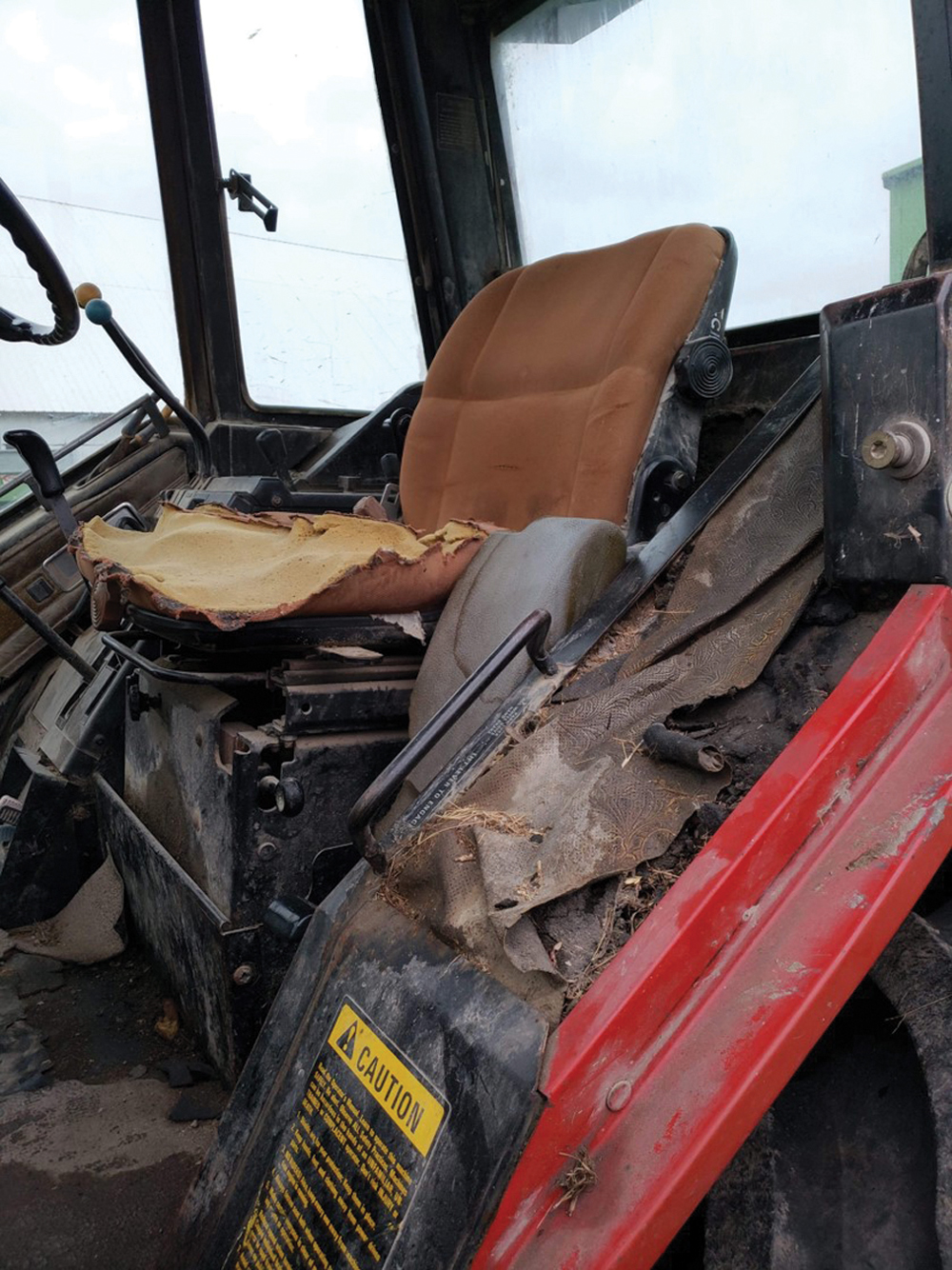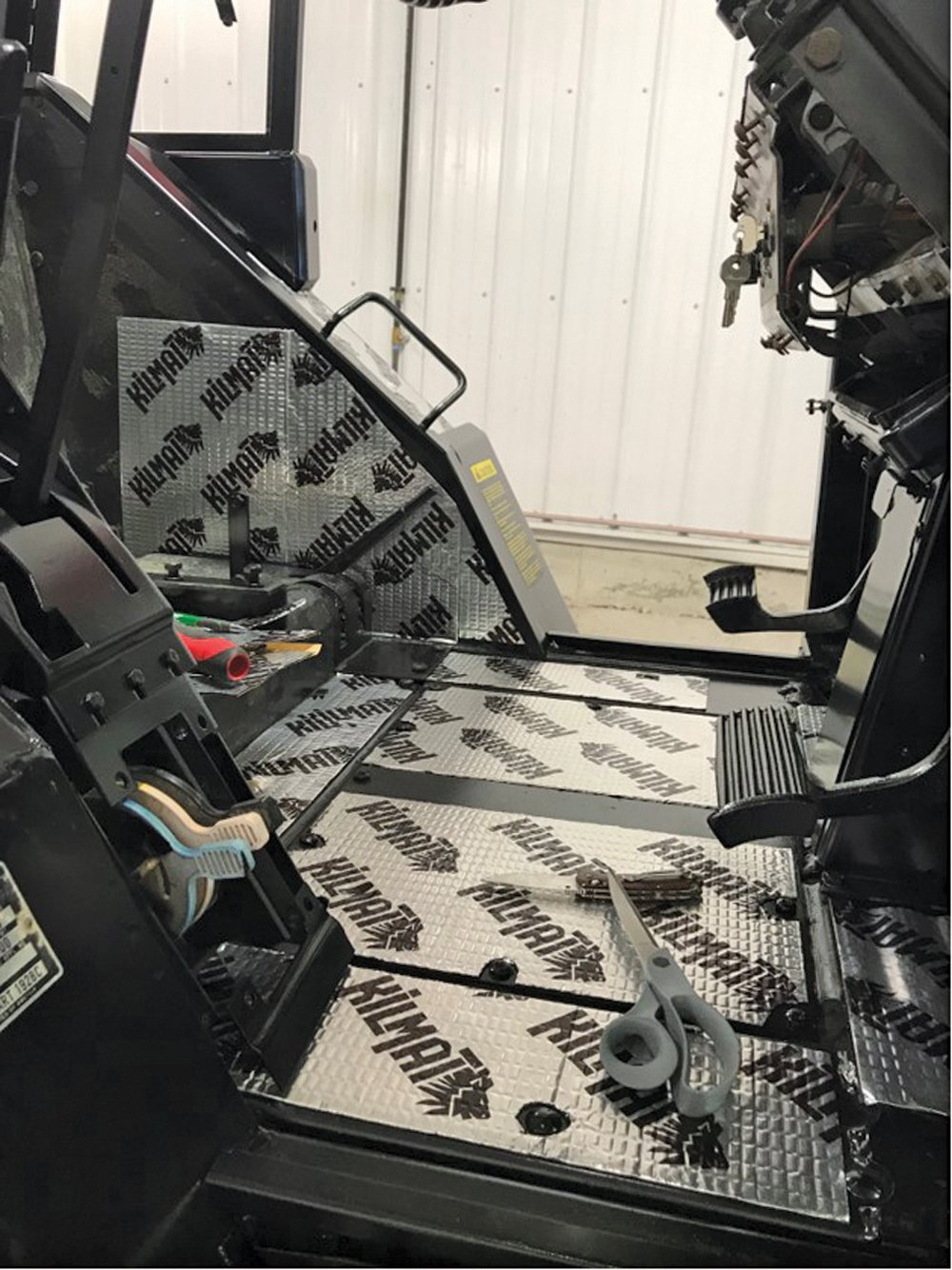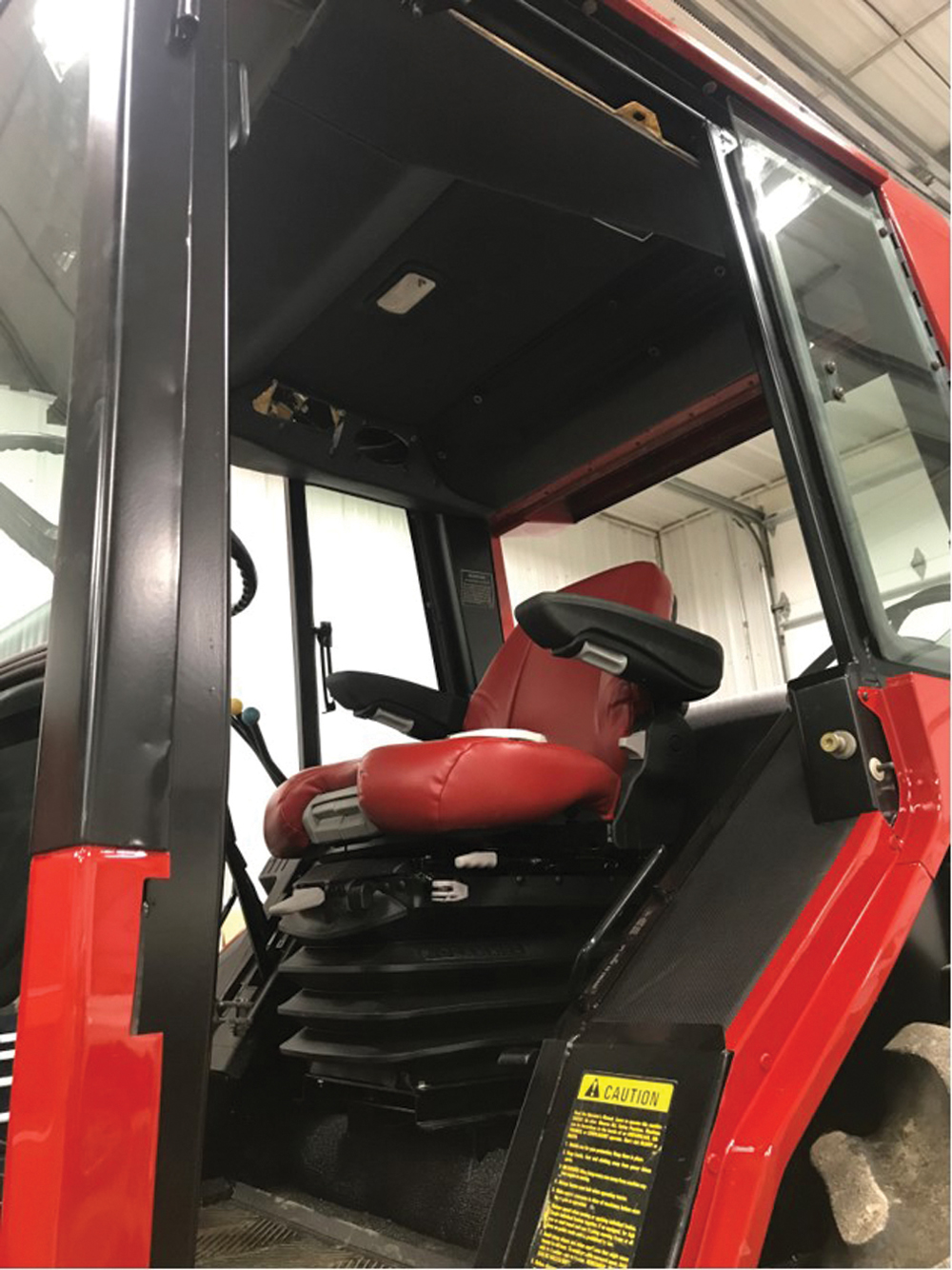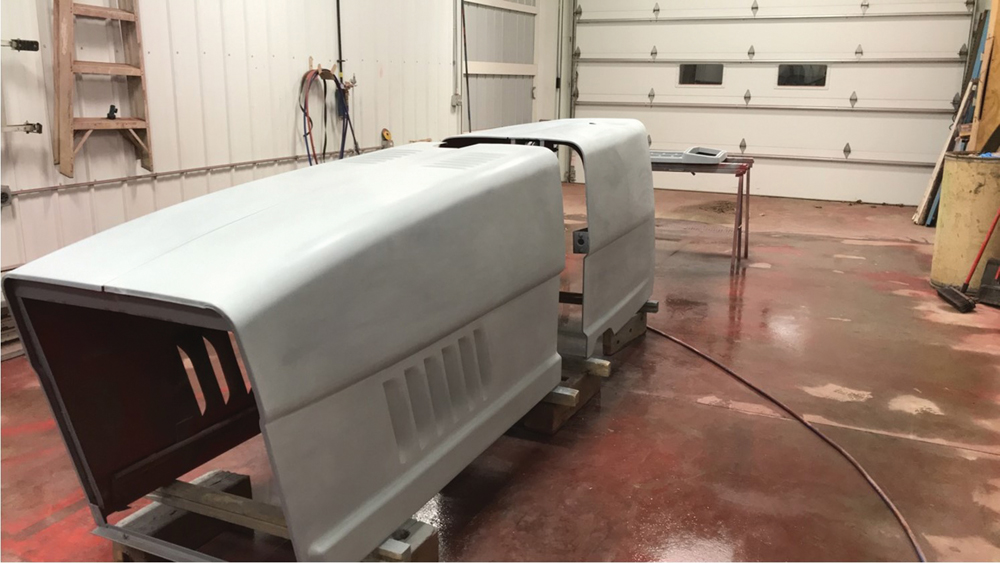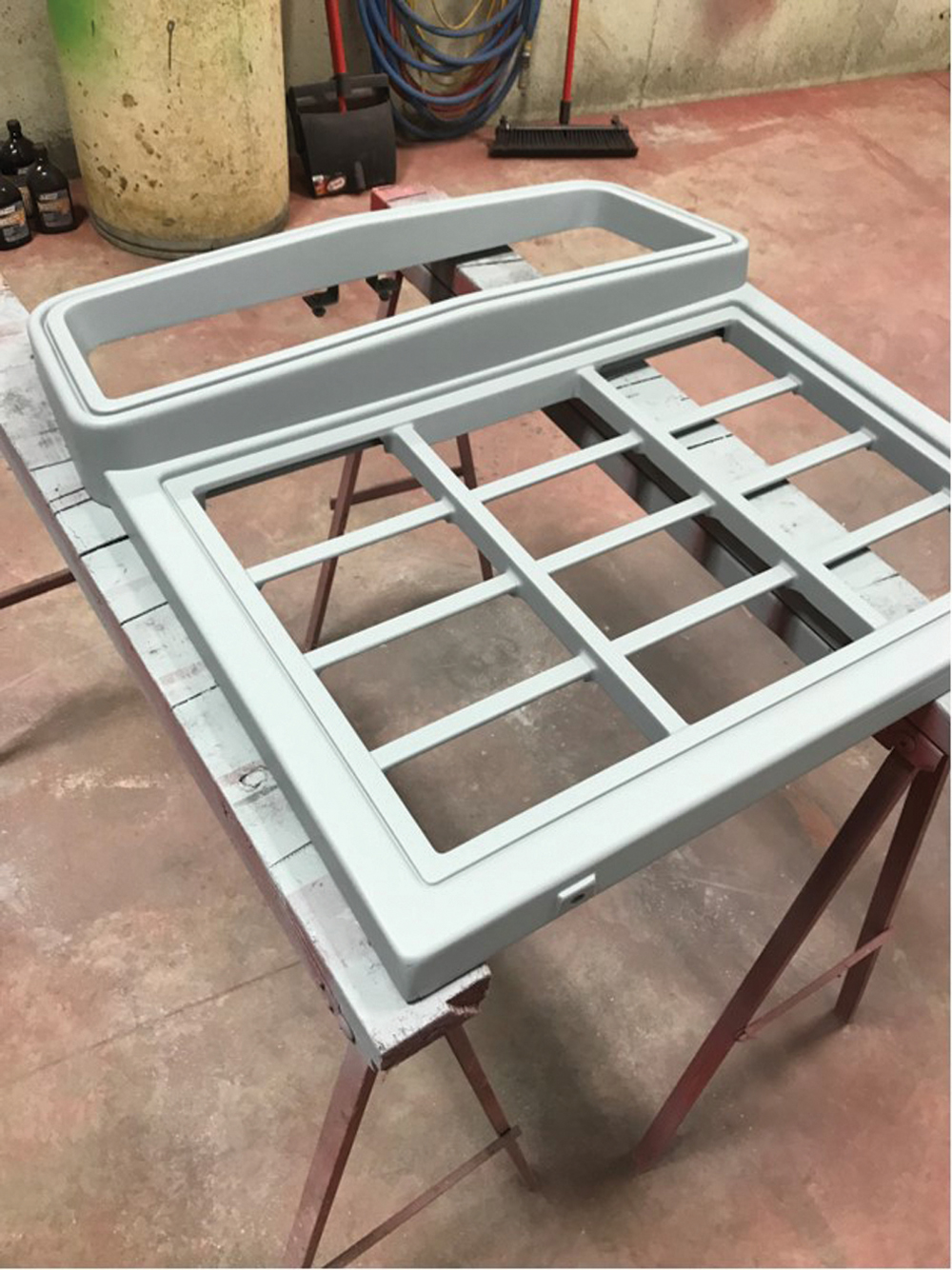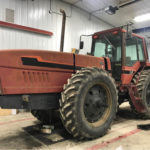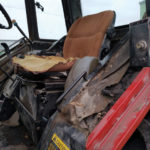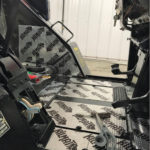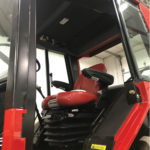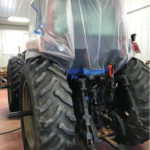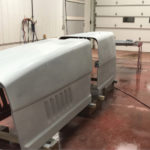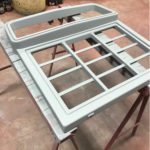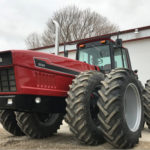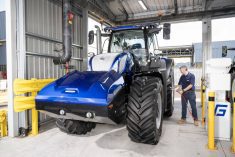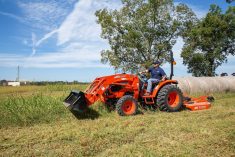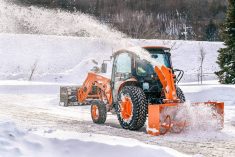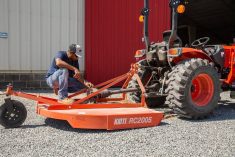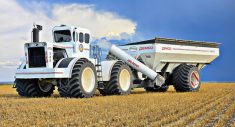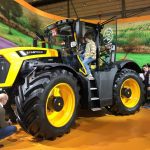
2plus2Case-before
Arriving on the farm with about 4,300 engine hours on the clock, the 6588 was mechanically sound, but it need a cosmetic refurbishment.
Photo: Flenker family
2plus2Case-interiorbefore
New upholstery was purchased from a supplier and installed after the cab was repainted and given a layer of sound deadening material.
Photo: Flenker family
2plus2Case-interior_in_progress
New upholstery was purchased from a supplier and installed after the cab was repainted and given a layer of sound deadening material.
Photo: Flenker family
2plus2Case-interior-new
New upholstery was purchased from a supplier and installed after the cab was repainted and given a layer of sound deadening material.
Photo: Flenker family
2plus2Case-paintmasking
After the cab was painted, it was masked off to prevent overspray during the chassis paint.
Photo: Flenker family
2plus2Case-hood
A spray booth in the farm shop made it easier to apply a quality paint job.
Photo: Flenker family
2plus2Case-grille
Nathan says finding a replacement grille for a 2+2 tractor could be nearly impossible. Fortunately, the one he had was in good condition.
Photo: Flenker family
2plus2Case-after
Now it has a “fresh from the factory” look. The inside tires still have about 75 per cent tread depth remaining and were still useable. Their outside mates were replaced.
Photo: Flenker family
2plus2Case-Nathan_and_family
Nathan Flenker and his children pose with their restored Case IH 6588 2+2. From left to right: Charlotte, five; Adeline, three; and Pearl, one.
Photo: Flenker family
For most of us who grew up on a farm, there is a favourite tractor model that holds some sentimental value. Maybe it was the first tractor you ever rode on with Grandpa or one the family had while you were a boy (or girl). For whatever the reason, that kind of sentiment has fuelled the tractor collector hobby for decades.
Nathan Flenker of Princeton, Iowa, has long admired IH 2+2 tractors. His family had one when he was growing up and he’d always wanted to get one to call his own and use in his current farming operation.
Read Also

Claas brings 1000 Series SP forage harvesters to Canada
In mid-August, Claas unveiled its new line of Jaguar forage harvesters at an event in Visalia, California, deep in the heart of that state’s dairy region.
“My dad had a 3588 (the forerunner to the 6588) when I was a little boy,” he says. “And he traded it off for a 9380 four-wheel drive. He just needed more horsepower. That was always my favourite tractor. I’ve wanted one forever. And I’ve come to a position in my life where I can buy one.”
But finding a 2+2 tractor to buy took some time. The 2+2 design was only in production from about 1978 to 1984, so they weren’t built in large numbers. Nathan spent a lot of time on the highway, driving to look at some examples that were listed for sale.
“I even drove out to Pennsylvania to look at one,” he says. “He wanted too much for what it was. The one I ended up buying was about 3-1/2 hours from me. I took the pickup and gooseneck trailer out and got it.”
Even though it had only about 4,300 hours on it, the tractor certainly looked its age, but mechanically things were fine. The previous owner kept it running pretty well. It just required an upgrade to R134 refrigerant in the air conditioning system along with a clutch adjustment.
“It was in pretty rough shape (cosmetically) when I got it,” Nathan explains. “I bought it from a farmer in Goldfield, Iowa. He told me he was the second owner and purchased it with 2,100 hours on it. When I was restoring the cab I found a card behind the dash from Helland & Long Imp. Co., which was the IH dealer located in Belmond, Iowa with a name of Marlin Daniels on it, who I believe was the original owner.
“It had all the components I was looking for. If you can find one with the rubber bellows on the pivot and the front grille, everything else is out there and pretty much available. Those are the two items you cannot get for it.
“I adjusted the clutch and changed all the fluids in it. The guy that had it before me had the rear end rebuilt in it. He put a new clutch in it and did the injector pump and injectors. They had it in mechanically good shape. It was just cosmetically bad.”
Nathan decided to jump right into the restoration with both feet and managed to do a complete cosmetic upgrade pretty quickly, with the tractor finished and rolling out of the farm shop in only seven weeks.
“On December 16, I think, we got home with it,” he says. “Seven weeks is what I have into everything. When I have something sitting in the shop, it needs to get out of there quick.”
Doing the work
Nathan had the advantage of having a fully equipped shop on the farm that included a paint booth, allowing him to do all the body and paint work himself.
“I’m kind of self taught,” he adds. “Growing up, my uncle would always repaint stuff in the farm shop, and I learned some tricks of the trade from him. I learned from my mistakes what to do and what not to do. I’ve painted quite a few things. I have neighbours asking me all the time, but it’s tough to find the time to do that as a side job.”
In all, just prepping the sheet metal surfaces for paint and spraying them took about 72 hours, which may sound like a lot. But it is about what you’d expect for a quality job. Fortunately, there was no rust to deal with, so that helped reduce the time spent on bodywork.
“It was solid,” he says. “The only thing was the right-hand fender. (The previous owner) was loading logs onto a trailer and one fell off onto the fender, so I had to get a replacement fender for that from a junkyard.”
Nathan sourced parts from a variety of sources, and only used his local Case IH dealer to get a couple of replacement lights.
“The upholstery I got from Fehr Cab interiors, and I was extremely impressed with the quality,” he says. “They do fantastic work. The seat I got from K&M Seat Manufacturing. The decals I got from Red Run Decals. The package had CNH on it, so they weren’t aftermarket. They were $500. The inside tires were probably 75 per cent. They’re old tires, but they’re still good enough for what I’m going to use it for. I put new tires on the duals.”
The tractor will see active duty on the farm. Nathan expects to use it on a seven-bottom plow and other jobs where the added traction is a benefit.
“You can go where a front-wheel assist or two-wheel drive tractor just won’t do,” he says.


